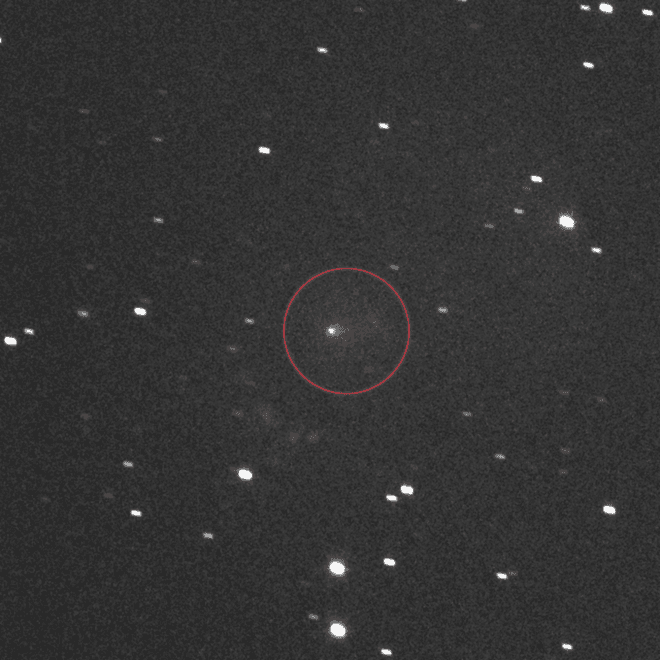Comet 3I/ATLAS, only the third known object to enter our solar system from outside, is causing excitement among researchers and amateur astronomers alike. Since its first discovery on July 1, 2025, NASA's ATLAS (Asteroid Terrestrial Impact Last Alert System) telescope has captured several images of the comet.
The Hubble Space Telescope captured one of the brightest images of Comet 3I/ATLAS on July 21, 2025, when the comet was about 277 million miles from our planet. Now, as the comet moves further through our solar system, NASA is unveiling more images of the interstellar object from the agency's various missions and using that data to better understand the interstellar visitor.
Read more: Another comet, ATLAS, appears to be fragmented after its close approach to the Sun.
Imaging Comet 3I/ATLAS
In addition to NASA's ATLAS and Hubble space telescopes, agency researchers also collected images and data from JWST (James Webb Space Telescope), TESS (Transiting Exoplanet Survey Satellite), Swift, SPHEREx, Lucy, Psyche, Parker Solar Probe, Perseverance rover, Reconnaissance Orbiter, Curiosity rover, Europa Clipper, PUNCH and ESA/NASA. SOHO and juice.
All of these missions were placed around the planet and our solar system. Thanks to this, they were able to obtain a wide range of images of comet 3I/ATLAS and give researchers a clearer picture of its size, shape, composition and trajectory.
JWST and SPHEREx: Infrared imaging
NASA's James Webb Space Telescope observed interstellar comet 3I/ATLAS on August 6 with its near-infrared spectrograph.
(Image credit: NASA/James Webb Space Telescope)
JWST captured the 3I/ATLAS image using near-infrared spectrograph technology on August 6, 2025. According to Sean Domagal-Goldman, acting director of NASA's Astrophysics Division, this infrared technology helps us detect light that the human eye cannot see.
“Infrared light is particularly good at helping us understand the composition of objects. We can see small molecular fingerprints on the things that make up those objects,” Domagal-Goldman said at a NASA press conference on November 19, 2025.
SPHEREx tracked the comet for about a week (from August 7 to 15) and captured infrared images of it. Researchers found high levels of carbon dioxide and traces of water ice, Domagal-Goldman said.
JWST, thanks to its infrared capabilities, will likely be the last telescope to track 3I/ATLAS as it leaves our solar system.
Lucy and Psyche: Opposing Views on 3I/ATLAS

Interstellar comet 3I/ATLAS, circled at center, as seen in a panchromatic, or black-and-white, image of L'LORRI on NASA's Lucy spacecraft.
(Image credit: NASA/Goddard/SwRI/JHU-APL)
En route to the asteroid of the same name, the Psyche spacecraft captured images of the comet between September 8 and 9, about 33 million miles from the spacecraft. Psyche was able to observe the comet for only about eight hours.
About a week later, the Lucy spacecraft took pictures 3I/ATLAS on the opposite side, like Psyche. When these images were taken, Lucy was about 240 million miles away from the comet.
Close Encounters of a Martian Species
Although 3I/ATLAS will not approach Earth, the comet did approach the orbit of Mars, about 19 million miles from the Red Planet. Mars rovers such as MAVEN have captured images of the comet along with HiRISE. The image captured here was taken by the MAVEN ultraviolet spectrograph, which helps break down ultraviolet light into colors, according to Tom Statler, NASA's lead scientist for small solar system bodies.

An ultraviolet image of hydrogen atoms surrounding comet 3I/ATLAS, the third interstellar object ever discovered by astronomers, as it passes through our solar system.
(Image credit: NASA/Goddard/LASP/CU Boulder)
In the image, researchers discovered different levels of hydrogen in the atmosphere of Mars and the comet. This adds another layer of understanding to the comet's composition.
From the surface of Mars Perseverance Rover took a faint image of the comet.
How old is 3I/Atlas and when did it enter our Solar System?
Other NASA missions and telescopes have spotted the comet as it continues its path through our solar system. NASA is still working to refine all the data they have collected so far, but are confident that more of their questions will be answered in the coming months. Some of these questions include when the comet entered our solar system.
While there is no definitive answer to this question, Domagala-Goldman said data from the Swift mission indicates the comet could have been in our solar system as early as May 2025, although more data is needed.
As for the age of 3I/Atlas, it also remains unclear. Although there is indirect evidence that the comet is older than ours solar systemWithout further study and more concrete evidence, the comet's age will remain uncertain, at least for now.
Read more: When was Halley's Comet last seen and will it ever return?
Article sources
Our authors in discovermagazine.com use peer-reviewed research and high-quality sources for our articles, and our editors review scientific accuracy and editorial standards. Review the sources used below for this article:








